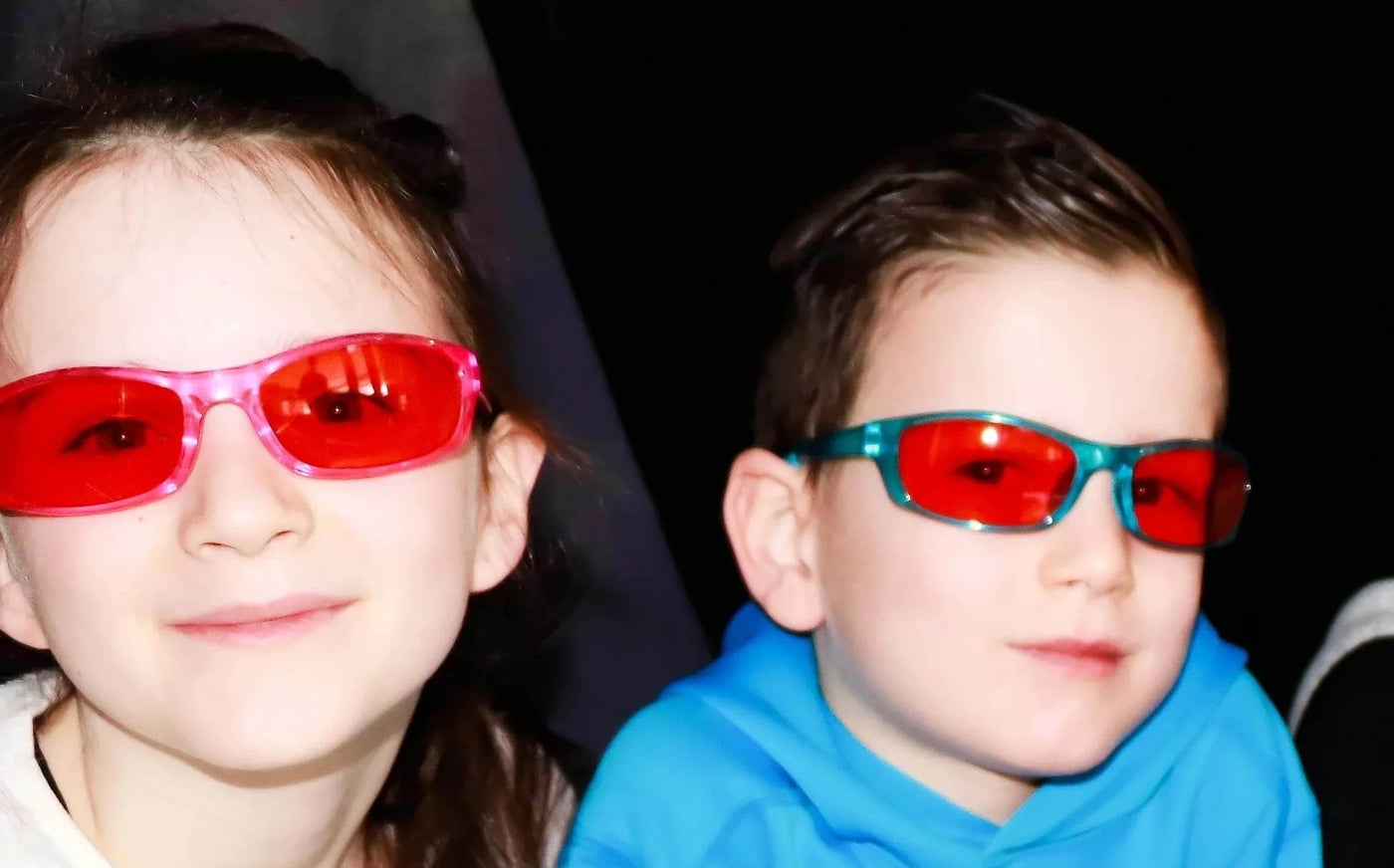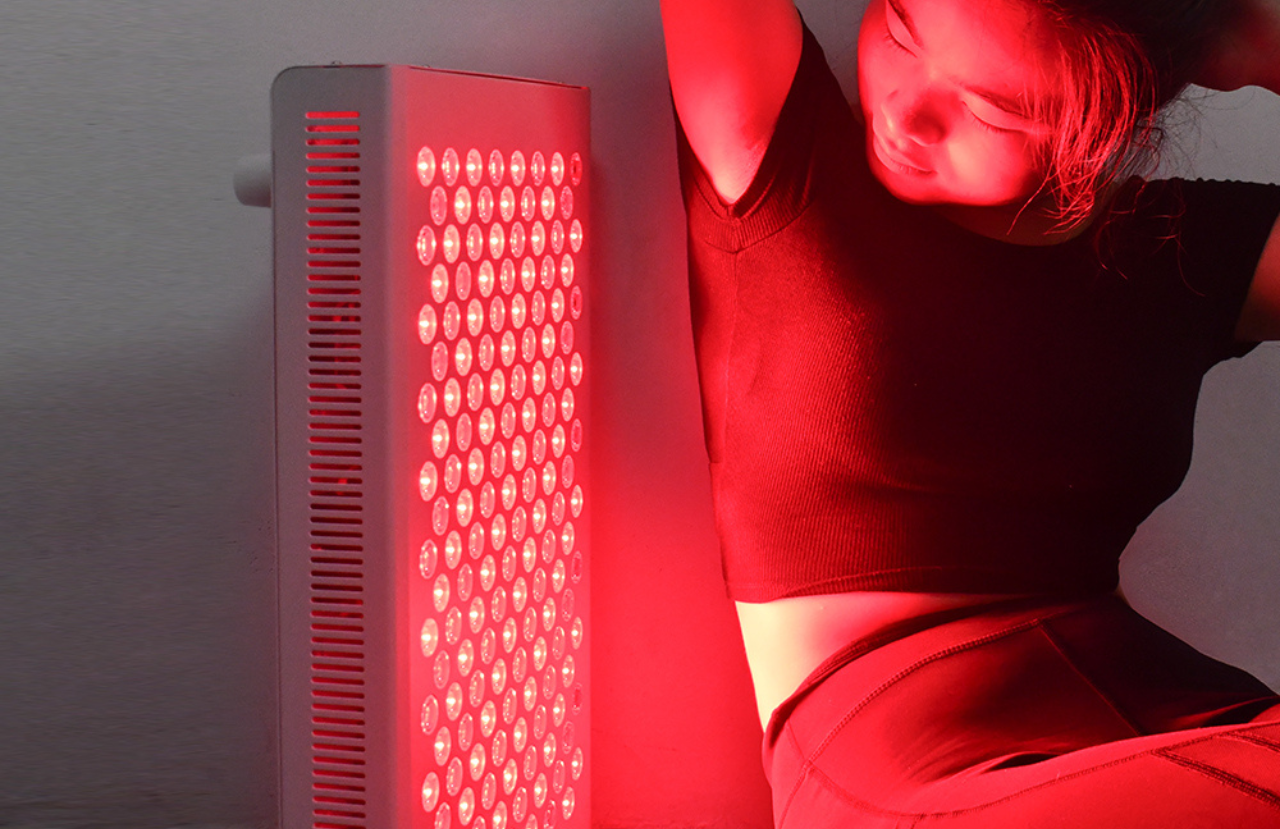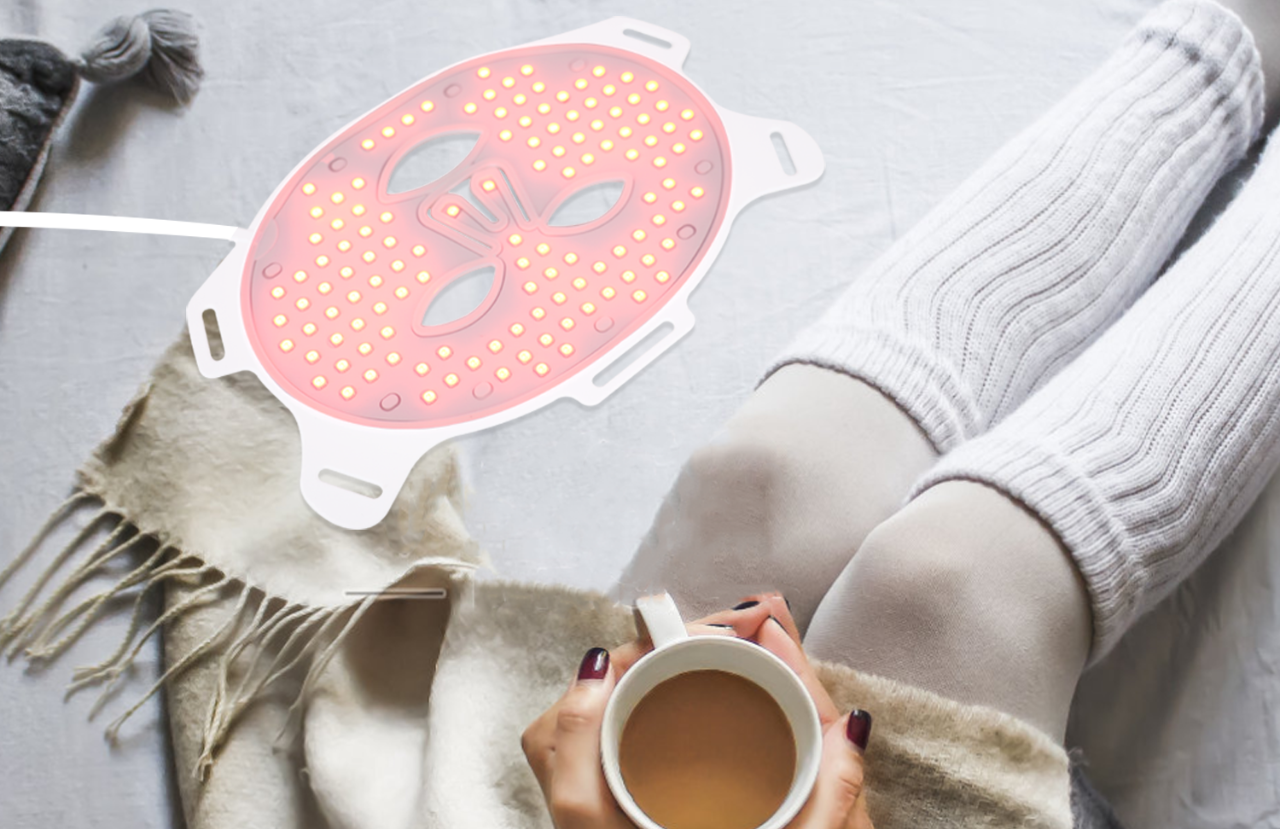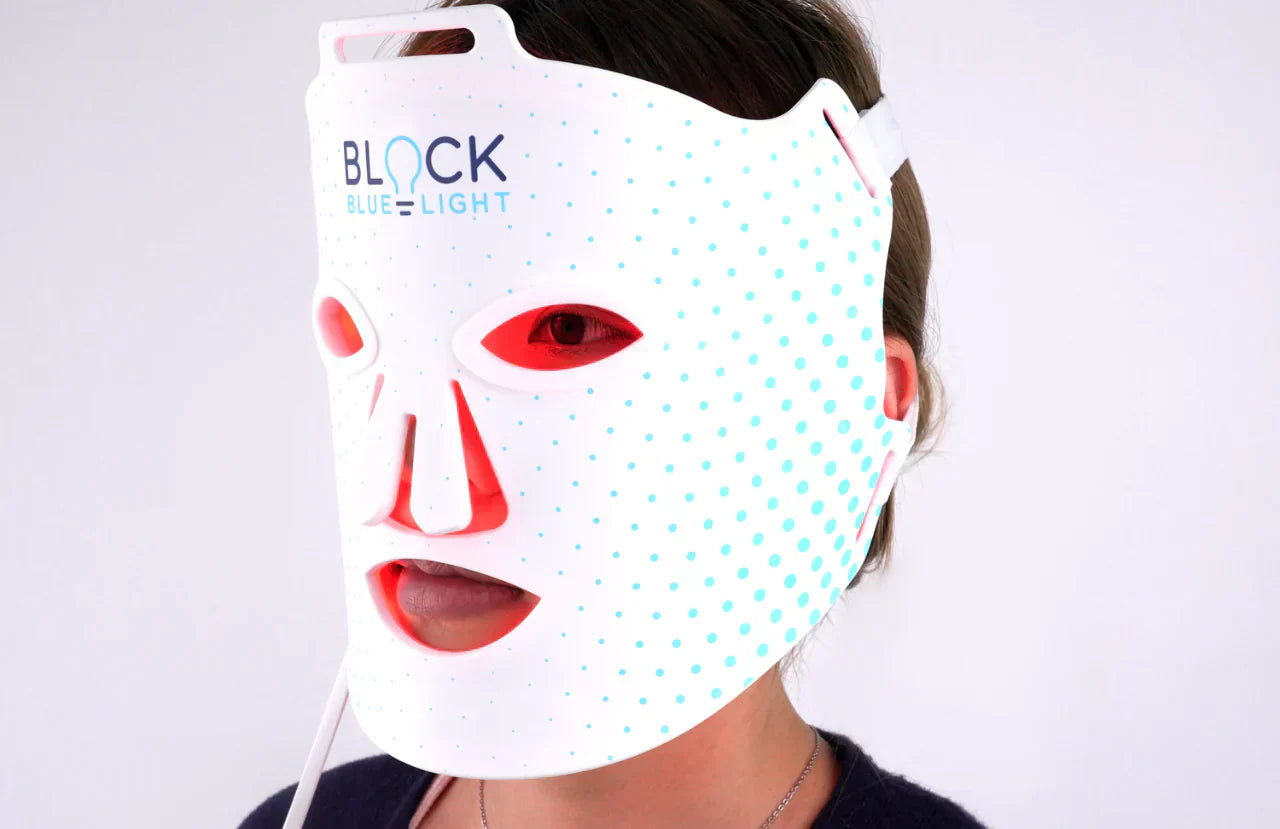In our increasingly digital world, children spend more time than ever in front of screens, whether for schoolwork, entertainment, or socialising. With concerns about the potentially harmful effects of blue light emitted by screens, parents may wonder: Does my kid need blue light glasses? In this article, we will dive into the topic, exploring what blue light is, its potential impact on children's eyes, and whether kids blue light glasses are necessary for protecting their eye health. Let's separate fact from fiction and make an informed decision for our young ones.
Understanding Blue Light
Blue light is a short-wavelength, high-energy light naturally emitted by the sun. It also exists in artificial sources, such as digital screens (e.g., smartphones, tablets, computers) and energy-efficient LED lighting. Blue light has been linked to various effects on the body, including regulating sleep-wake cycles, influencing mood, and potentially impacting eye health.

Blue Light and Children's Eyes
Impact on Sleep Patterns
Exposure to blue light, particularly in the evening or nighttime, can suppress the production of melatonin, a hormone that regulates sleep. This sleep-wake cycle disruption can affect a child's sleep quality and duration, leading to daytime fatigue and difficulty concentrating.
Digital Eye Strain
Prolonged screen time can cause symptoms collectively known as digital eye strain or computer vision syndrome. These symptoms may include eye fatigue, dryness, redness, blurred vision, headaches, and neck or shoulder pain. However, it is essential to note that digital eye strain is primarily related to screen usage and not solely due to blue light exposure.
Macular Degeneration
Some studies suggest that long-term exposure to high-intensity blue light may contribute to retinal damage and increase the risk of age-related macular degeneration (AMD) later in life. However, the evidence regarding the specific role of blue light in the development of AMD is still evolving, and it primarily pertains to cumulative exposure over many years.
Aside from these primary effects, blue light may have many secondary effects. For example, disturbed sleep can cause mood and appetite changes and reduce focus.
Debunking the Need for Blue Light Glasses
Natural Protection
The human eye has a natural mechanism for filtering out a significant amount of blue light. The eye's cornea and lens help block and absorb harmful ultraviolet (UV) and blue light before it reaches the retina. Therefore, healthy eyes have built-in protective measures. So, your kid will need blue light glasses only if they use screens excessively or have pre-existing eye conditions.
Device Settings and Apps
Many digital devices offer settings or apps that allow users to reduce blue light emissions. These features, such as Night Shift on iOS devices or Night Mode on Android, can automatically adjust the display's colour temperature to appear warmer and emit less blue light. Although night mode offers a more comfortable reading experience by changing the colours and contrast, it doesn't significantly reduce blue light levels.

When Are Blue Light Glasses Beneficial?
While kids blue light glasses may not be necessary for every child, there are specific scenarios where they can provide additional protection:
Excessive Screen Time
If your child spends an extended amount of time in front of screens, such as for online learning or extreme gaming, blue light glasses could help reduce eye strain and potential sleep disturbances.
Sensitivity to Light
Some children may be more sensitive to bright lights, including blue light. If your child experiences discomfort or increased eye sensitivity when exposed to screens or certain lighting conditions, blue light glasses with tinted lenses can help mitigate these symptoms.
Existing Eye Conditions
Children with certain pre-existing eye conditions, such as astigmatism, may benefit from blue light glasses. These glasses can provide an added layer of protection and reduce the potential strain on their eyes when using digital devices.
However, using blue light glasses for kids isn't an excuse to extend screen time. Even if your kid's eyes are protected from blue light wavelengths, they'll still be affected by the other drawbacks of screens, such as the content they see and reduced physical activity. Therefore we still encourage parents to limit their kid's screen time and promote a balanced lifestyle. Establishing reasonable boundaries with screens and encouraging outdoor activities, hobbies, and face-to-face interactions can go a long way in promoting kids' overall well-being.
In addition to blue light glasses, optimizing the lighting conditions in the surrounding environment can also help. Using dimmer and warmer lighting at home, especially in the evening, can create a more conducive atmosphere for relaxation and better sleep quality. Note: not all yellow and orange light is blue-light free. Some are just LEDs that have a tinted casing. When buying blue-free lighting, check the spectrophotometer report to see if it's legitimate.
Choosing the Right Blue Light Glasses
If you decide to explore blue light glasses for your child, here are some factors to consider when choosing the right pair:

1. Choose the correct lens colour
The lens colour depends on whether you buy blue light reading glasses for day or night.
Daytime computer glasses are clear or yellow and have a mild filter, while night-time blue blocking glasses are red or amber and have a strong filter. Read our blue light lens colour guide to determine which lens you need.
2. Check the spectrophotometer report (to see if they work)
Always ask for a spectrophotometer report, also known as a transmittance spectrum report, when buying blue light-blocking glasses. This is a thorough report detailing the specific wavelengths filtered by the lens. It is measured by shining steady light through the lens and measuring the light output. The report outlines the 'wavelength' and the 'percentage' of light filtered. For instance, it can tell you whether blue light has been filtered by 10%, 50%, or even 100%.
So, what should this report indicate for different types of reading glasses? For clear-lens glasses, ensure that they filter at least 50% of the light in the 300-500 nm range. If the filtration is less than 50%, for example, 10% or 20%, the glasses will make a slight difference.
Yellow-lens glasses should completely filter out blue light in the lower range of the blue light spectrum (400-455nm) and meet the above requirements.
As a trusted provider, all BlockBlueLight's products undergo individual lab-grade spectrophotometer testing, ensuring their efficacy.
3. Check if the glasses protect against the peak wavelength of blue light
Confirm that the glasses protect the peak blue light wavelength at 425nm, where the most damage can occur. BlockBlueLight's glasses incorporate a special pigment for protection in this range.
Remember, when it comes to health-related products, caution is paramount. The light entering your eyes influences your vision, hormones, mood, appetite, and sleep patterns. Investing in research-backed prescription glasses that effectively filter blue light is critical.
At BlockBlueLight, we embrace this notion and meticulously design our products to harmonize with your body and nature. Each pair of our blue light filtering reading glasses is individually tested, and the results are transparently shared in the product descriptions on our website.
4. Make sure the glasses are compatible with prescription glasses
If your kid is already wearing prescription glasses, it's best to have blue light protection applied to prescription glasses. Otherwise, they'll have to switch between 2 pairs of glasses! At BlockBlueLight, all our designs are compatible with prescription glasses. Simply upload your child's eye card when placing your order, and the lens will be created accordingly.
For more information on red light, refer to the following articles:
- Protecting your child's eyes from blue light
- Blue light blocking glasses and babies' sleep
- Buying prescription blue light glasses
- Telling if blue light glasses are legitimate
- Computer glasses vs blue light glasses
Customers Also Ask
What age are blue light glasses for?
Blue light glasses can benefit people of all ages who spend significant amounts of time in front of digital screens or are exposed to artificial blue light.
What are the symptoms of needing blue light glasses?
Symptoms that may indicate a need for blue light glasses include eye strain, dry or irritated eyes, blurred vision, headaches, and difficulty sleeping after prolonged exposure to digital screens or artificial blue light.
How do I protect my child from blue light?
To protect your child from blue light:
- Limit screen time.
- Use device settings or apps that reduce blue light emissions.
- Encourage regular breaks from screens.
- Consider using blue light filters or screen protectors.
- Blue light glasses can be an option if your child frequently uses digital devices or experiences eye strain.
Should 12-year-olds wear blue light glasses?
Whether a 12-year-old should wear blue light glasses depends on their specific circumstances. Blue light glasses may be worth considering if the child spends a significant amount of time in front of screens and experiences symptoms such as eye strain. It is advisable to consult with an eye care professional to determine the most suitable approach for your child's eye health and vision needs.





